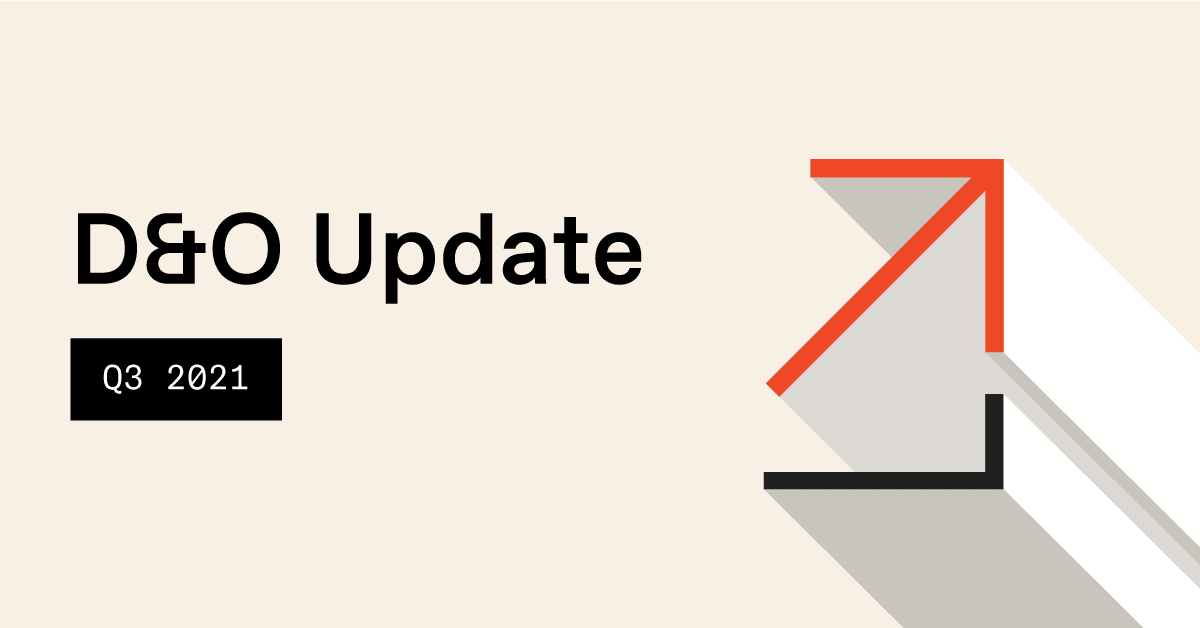Key Takeaways
Cryptocurrencies have become more relevant to business operations and everyday life in the past few years. These digital currencies have become so popular that global crypto investors enjoyed $162.7 billion of realized total gains in 2021, increasing by $35.5 billion from 2020. As gains skyrocket, we must understand the risks crypto company leaders face in today’s volatile market. Let’s look at some issues crypto companies face, along with D&O insurance solutions that support this industry’s momentum.
Understanding the Risks Associated With Crypto Storage
Despite the statistics reflecting massive growth in DeFi’s ecosystem, it’s time to talk about our concerns in this industry. For example, the following emerging risks have encouraged underwriters to tread more cautiously when assessing crypto companies.
Storage Strategies
Briefly, individuals typically store cryptocurrencies in a wallet. These wallets usually contain a public address of many case-sensitive and random alphanumeric characters, with an accompanying private key. Unfortunately, one mistype could quickly lead to lost assets.
Most cryptocurrency holders use some cloud-based storage provider to manage their assets. However, this storage type is often the least secure, resulting in cybercriminals frequently targeting cryptocurrencies.
It’s not hard to believe that crypto companies battle with these notorious hackers almost daily. Storage solutions are a significant challenge for crypto holders and the companies that serve them.
Crime Issues
The headlines remind us that criminals and terrorists often rely on cryptocurrency to avoid exposure. However, this old news puts crypto companies in a tight spot. And when companies hold cryptocurrencies on their balance sheets, storage becomes even more critical. Here’s why; underwriters frequently inquire about storage methods.
Additionally, cryptocurrencies are popular because of their effortless trades. But the ease often sets companies up for criminal activity.
Two recent (and massive) cryptocurrency thefts occurred when cybercriminals laundered tiny sums of money in digital tokens. Cybercriminals stole $275 million in cryptocurrency from the KuCoin exchange in 2020, and hackers struck the industry again in 2021, stealing $600 million from the Blockchain site Poly Network.
Unfortunately, when money is missing, the empty-handed most often point an accusing finger at those in charge. Of course, company leaders can’t control when, how, or who hackers target. But directors and officers of crypto companies must be aware of their risks.
D&O Insurance Considerations for Crypto Companies
Besides the complications surrounding storage issues and theft risks, directors and officers must know what they’re up against. Leaders undoubtedly benefit from knowing the current D&O landscape. For example, the number of federal court securities suit filings has experienced a shift during the past few years.
D&O lawsuits have climbed for the number of listed companies. In other words, publicly-traded companies experience more D&O litigation than ever before. They number of suits is outpacing the number of listed companies. And private companies aren’t far behind. Additionally, it only makes sense to factor in the pandemic-induced litigation lulls during 2020 and later.
So, what’s all the fuss? Well, if we could sum it up in one word, it would be mismanagement.
Cryptocurrency Risk Management Guide
Real-Life Claim Example
Even recently, the US Commodity Futures Trading Commission (CFTC) sued Gemini Trust Co., contending that the New York trust company violated federal laws governing commodities. Furthermore, Gemini was accused of making false and misleading statements about a bitcoin futures contract.
According to Business Insurance, founders Cameron and Tyler Winklevoss defend their actions vehemently; however, the agency seeks civil fines and other remedies.
Our Insights
With these recent happenings in mind, our own Ian Sander, Account Executive, chimes in with his insights. “This industry needs to look closely at their D&O regulatory coverage. That is because do’s and don’ts in crypto have largely been established in courts via SEC or CFTC lawsuits.
The question is not whether your D&O policy contains regulatory coverage but when. Can an invitation to produce documents trigger your policy? Or, must you receive a formal notice of charges? These investigations often begin informally; triggering coverage and getting an experienced claims team behind you quickly is critical.”
What D&O Insurance Covers
D&O insurance protects crypto companies and their executives if someone sues either or both. Allegations against directors and officers run nowadays; however, most cases stem from mismanagement of the company. There are three layers to D&O insurance worth reviewing, including:
- Side A: If a director is individually named in a suit and forced to pay defense costs and settlements. This portion of D&O insurance kicks in to protect the individual. Side A will only pay the individual directors if the entity (company) is unable to or unwilling to indemnify the individual, such as if the company is insolvent or the claim goes against the company by-laws.
- Side B: When the entity indemnifies individuals named in the lawsuit, Side B coverage reimburses those costs. However, it only extends to indemnifying insured individuals named in the lawsuit.
- Side C: This coverage provides a balance sheet protection for the company named in the lawsuit alongside an individual executive. Side C coverage will reimburse the costs and settlements incurred.
Understanding the details of what coverage your company needs can be confusing. Founder Shield specializes in knowing the risks your industry faces to make sure you have adequate protection. Feel free to reach out to us, and we’ll walk you through the process of finding the right policy for you.









